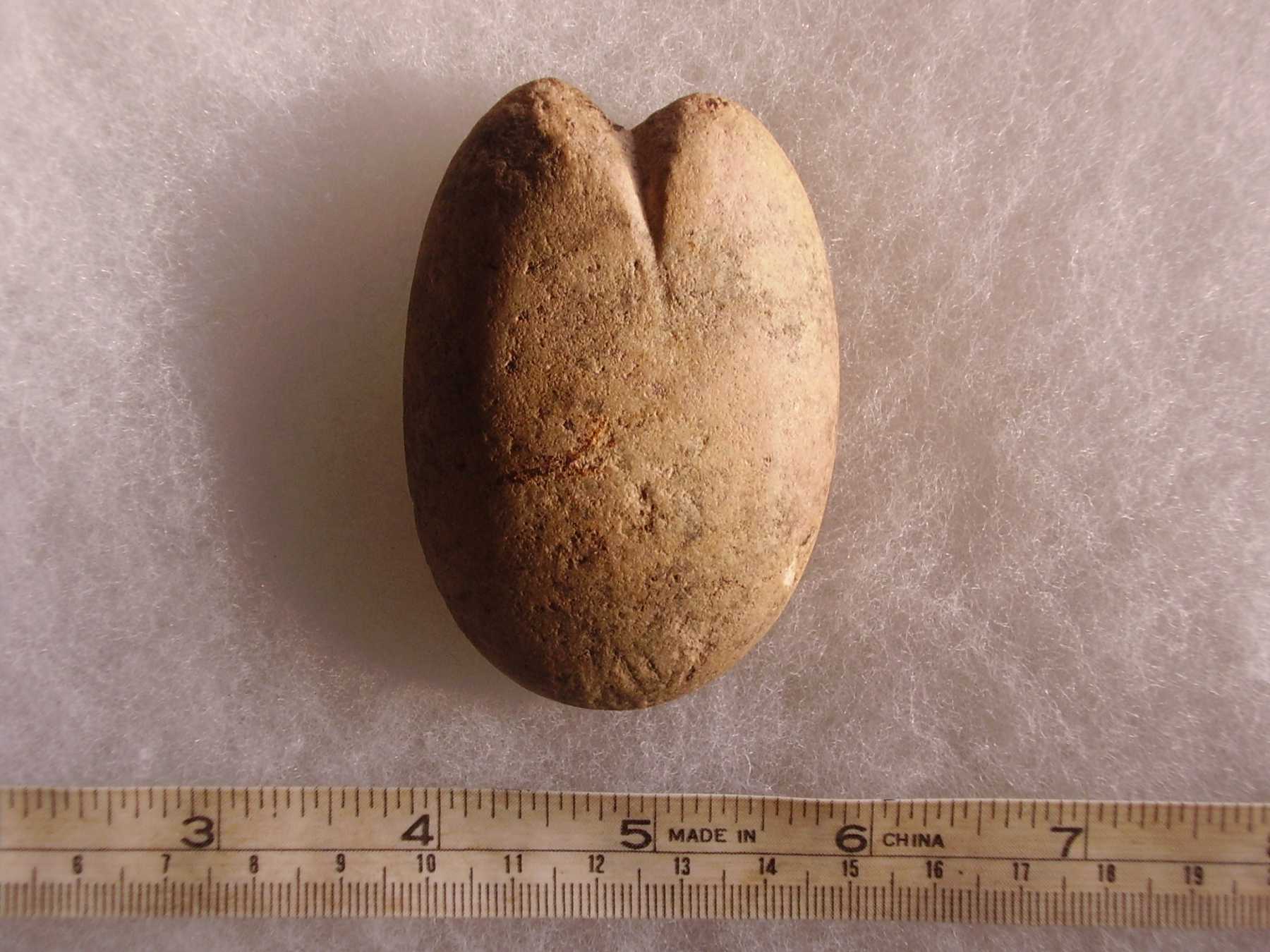Its made of a quartzy sandstone pebble... some light grinding/smoothing on one side to flatten it a bit. The 'business end' has me stumped, though. When I saw it from several yards away, I thought, "another hammer stone", but this is something new to me. The notching makes a nice edge where the two sides meet. Some kind of splitting tool? I thought it would do a fine job of processing large bones.








Comment